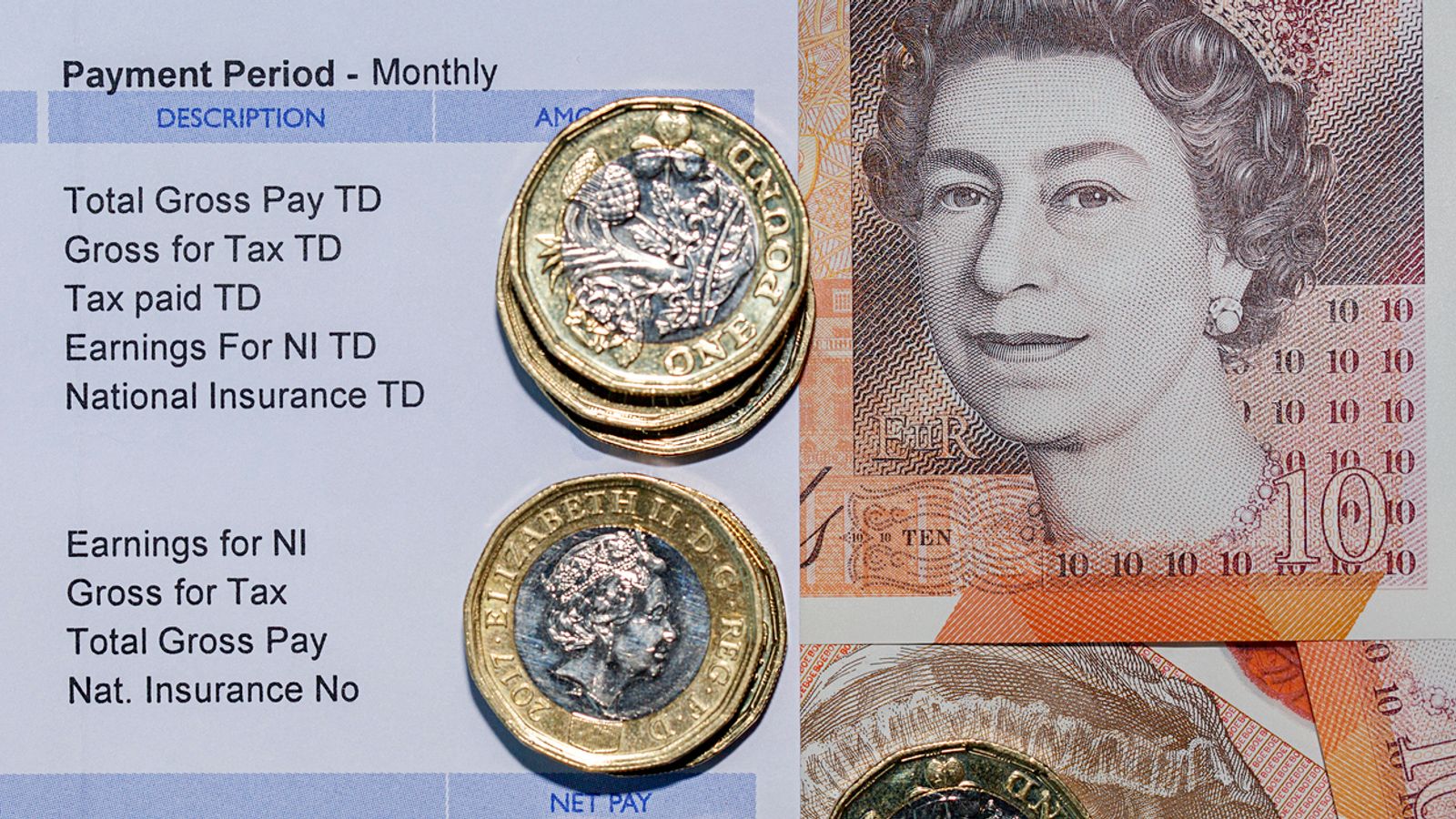Regular pay has seen the biggest plunge in more than 20 years when rising prices are taken into account, the Office for National Statistics has said.
Real wages – a measure of regular wage growth when inflation is factored in – fell 3.7% from March to May, the ONS said.
This was the worst year-on-year drop since records began in 2001.
“Following recent increases in inflation, pay is now clearly falling in real terms both including and excluding bonuses,” said David Freeman, head of labour market and household statistics for the ONS.
UK households are seeing their spending power eroded by soaring fuel and energy costs.
Real wages took a 3.5% hit in the year to May – an improvement on April’s figure of 4.5%, but still worse than any other time on record.
The employment rate remains below pre-pandemic levels despite increasing by 0.4 percentage points to 75.9%.
Thousands of nurses, teachers and doctors to find out what pay rises they will receive
Ministers finally land leadership team for ‘moonshot’ agency ARIA
Interest rates could top 2% in the next year, Bank of England policymaker says
While the number of people neither working nor looking for a job is now falling, it remains well up on where it was before COVID-19 hit.
“With demand for labour clearly still very high, unemployment fell again, employment rose and there was another record low for redundancies,” Mr Freeman said.
DWP Minister Julie Marson said it was “fantastic news” that the UK now has two million more women in work than in 2010, adding that the latest OECD data shows the country has the second highest level of women in work in the G7.
“As we grow the economy, it’s vital we make sure everyone can find a job that’s right for them – and importantly that they can progress in work,” she said.
“That’s why we’re keeping up our support to get people at any age or career stage into work, including a new multi-million pound offer to help the over 50s get into, and remain in employment.”









